
寺院のシンボル「仁王像」は仁王十色の形姿 The symbol of the temple, "Nio Statue," is the shape of the numerous colors of Nio.
神社仏閣で守護神として祀られているものは多い。神社でいえば「獅子」を始め犬・猫・狐など様々な架空の生き物を含め動物が多い。一方、寺院では、山門に金剛力士像、堂内では天部といわれる仏像や龍の造形物があり、寺院全体や本尊を護る役割として安置されている。
Many are enshrined as guardian deities in shrines and temples. Speaking of shrines, there are many animals including various fictitious creatures such as dogs, cats, and foxes, including "lions". On the other hand, at the temples, there is a statue of King Nio at the gate, and a Buddhist statue and a dragon model called Tenbu in the hall, which are enshrined as a role to protect the entire temple and the principal image.
これらの中で、個人的ではあるが「龍」と「金剛力士像」がとくに好きである。ご存じ金剛力士像は、金剛杵(こんごうしょ/仏敵を退散させる武器)を持つもので、開口の阿形(あぎょう)像と、口を結んだ吽形(うんぎょう)像の2体を一対として寺院の表門(三門・山門)などに安置されている。寺院の門に配される際には仁王(におう/二王)の名で呼ばれている。
Of these, I personally like the "dragon" and the "Nio statue". As you know, the statue of Nio has a pestle only (a weapon that disperses Buddhist enemies), and has two statues, an A-shape statue with an opening and an Un-shape statue with a mouth tied. As a pair, they are enshrined at the front gates (mountain gates) of the temple. When it is placed at the gate of the temple, it is called by the name of Nio (Niou).
阿形の「阿」は、宇宙の根源や永遠を象徴する文字であり、ものごとの始まりを意味する。一方、吽形の「吽」にはものごとの終わりの意味があり、2体の金剛力士像は世界の始まりと終わりを示しているといわれている。
現在全国に金剛力士像が安置されているのは主な寺院で81カ寺あるといわれている。その中で唯一国宝に指定されているのが東大寺の南大門に安置されている金剛力士像。寺院にあるすべての金剛力士像は筋骨隆々の姿で立っている。山門に安置されていることにより、長年の風雨にさらされ損傷も見られるが、その姿は迫力があり美しい。
The "A-shape" in the A-shape is a character that symbolizes the origin of the universe and eternity, and means the beginning of things. On the other hand, the Un-shape "Un" has the meaning of the end of things, and it is said that the two statues of Nio indicate the beginning and end of the world.
It is said that there are 81 main temples where Nio statues are currently enshrined all over the country. The only national treasure among them is the statue of King Nio enshrined at the Nandaimon Gate of Todai-ji Temple. All the statues of Nio in the temples stand in the form of muscular ridges. Since it is enshrined at the mountain gate, it has been exposed to the wind and rain for many years and has been damaged, but its appearance is powerful and beautiful.
全国の金剛力士像の一部にすぎないが11カ寺を載せている。どれを見ても迫力は伝わってくる。しかし、建造時代や仏師が異なるため、それぞれの姿や顔が違う。それぞれが微妙に違う形姿や表情をもっている。その姿を見るのがまた楽しい。これこそ「仁王十色」で、守護神ながら山を訪ねる人を快く迎えてくれる寺院のシンボルになっている。
Although it is only a part of the statue of King Nio nationwide, it has 11 temples. No matter what you look at, the power is transmitted. However, because the construction period and the Buddhist priests are different, their appearances and faces are different. Each has a slightly different shape and facial expression. It's fun to see it again. This is the "Nio numerous colors" and is a symbol of temples that welcome visitors to the mountains while being guardian deities.
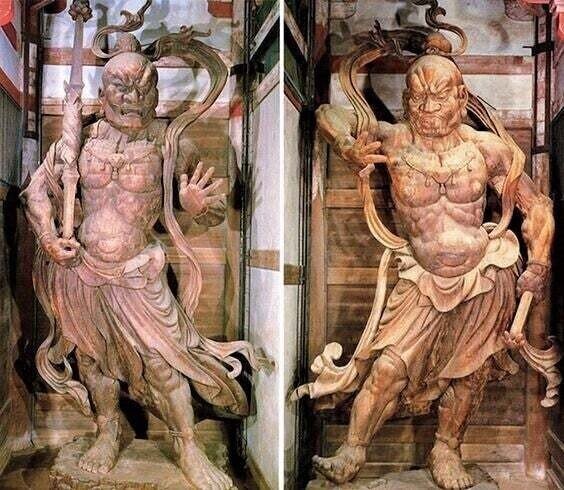
東大寺仁王像
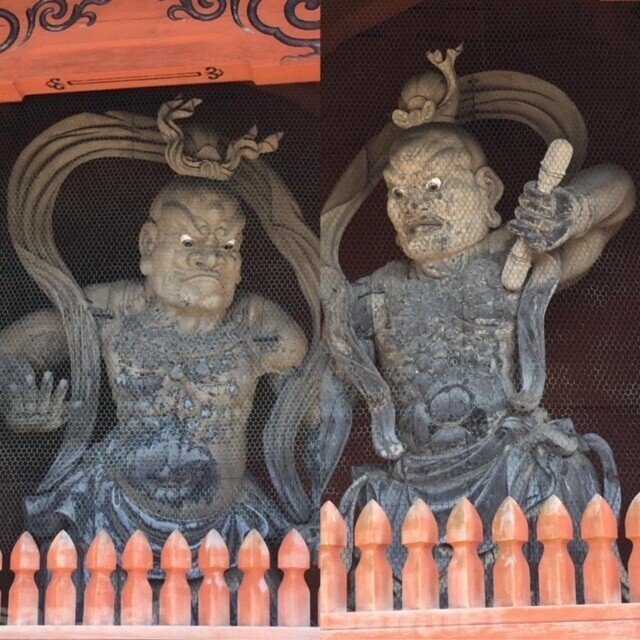
高野山仁王像
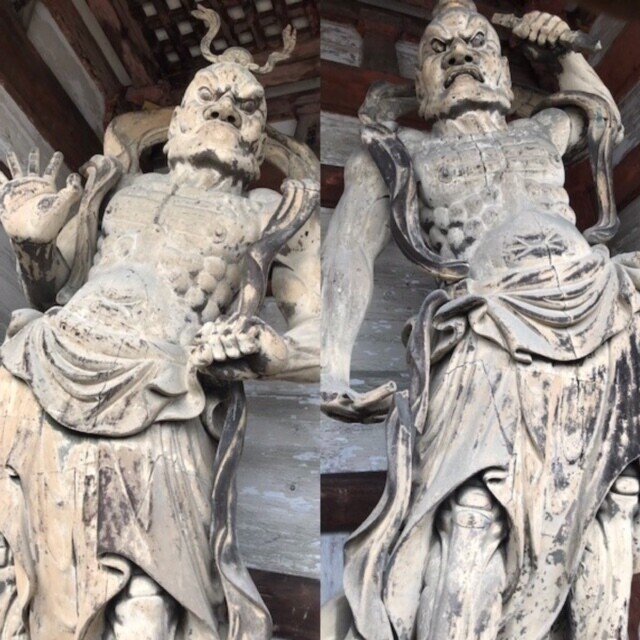
仁和寺仁王像
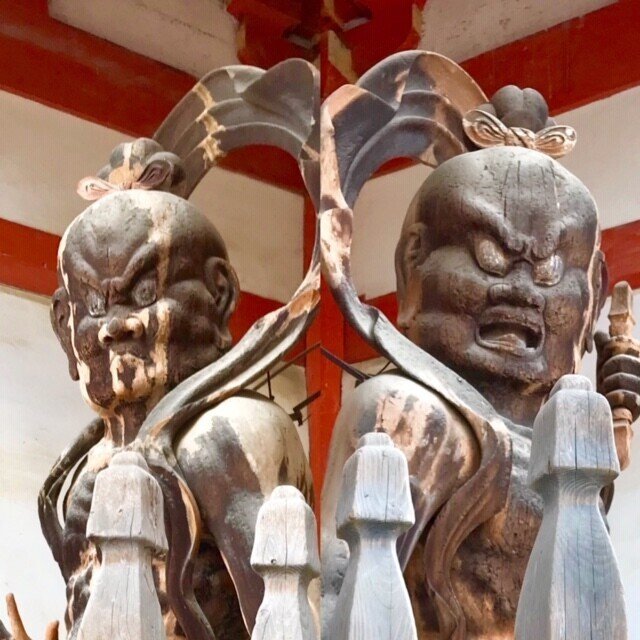
醍醐寺仁王像
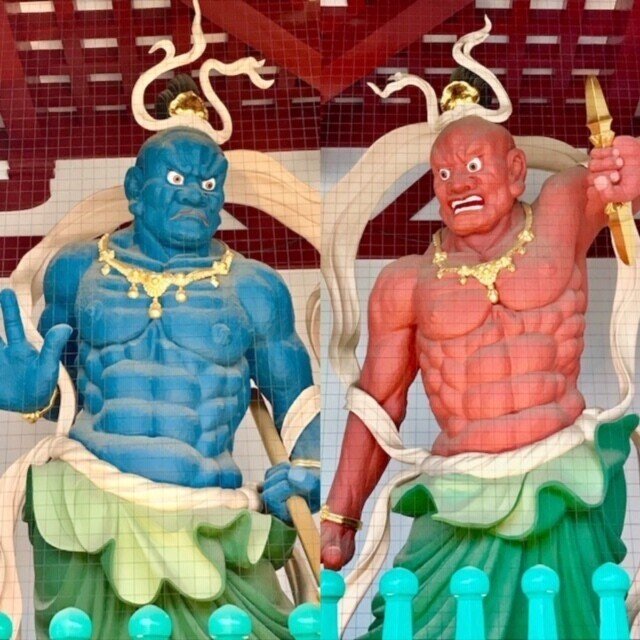
四天王寺仁王像

浄土寺(尾道)仁王像
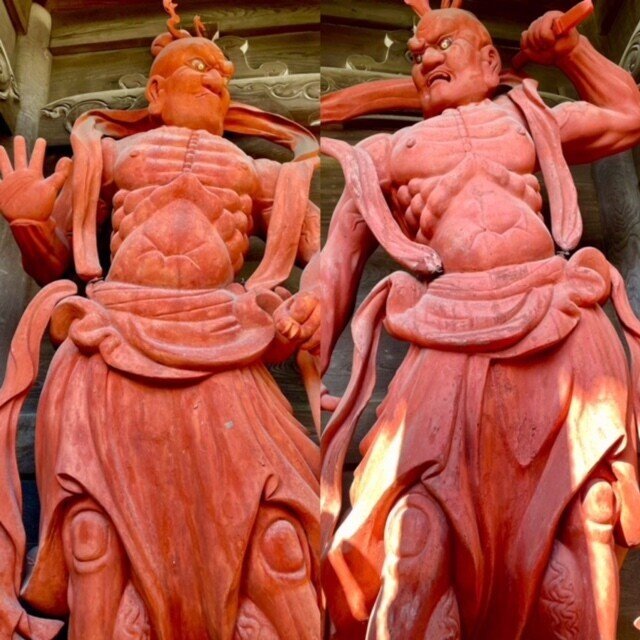
清凉寺(京都)仁王像
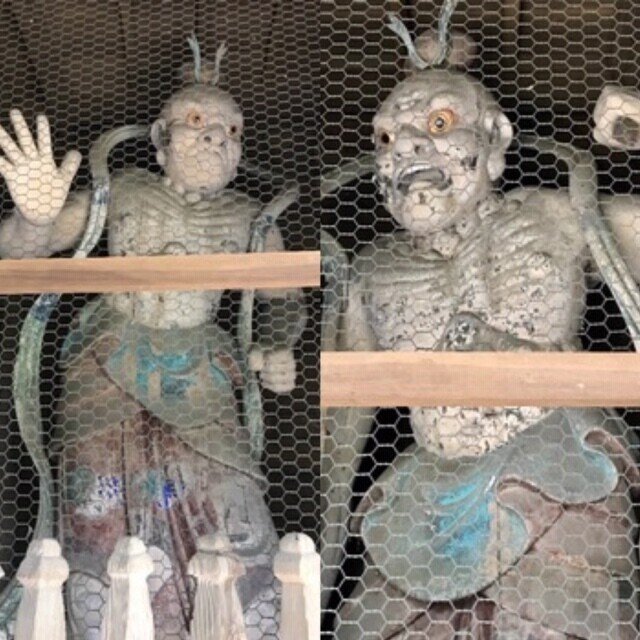
石峯寺(兵庫)仁王像
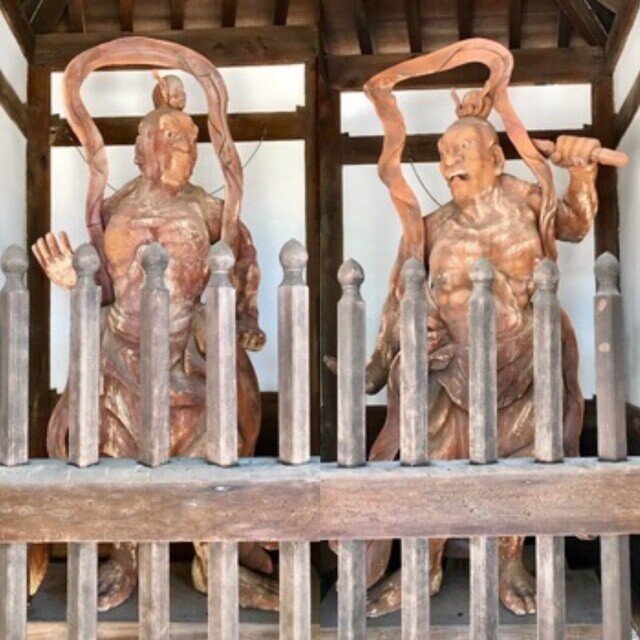
須磨寺(神戸)仁王像

中山寺(宝塚)仁王像
リポート&写真/ 渡邉雄二 Reported & Photos by Yuji Watanabe
よろしければサポートお願いします。日本の伝統文化に関心を寄せています。若いころに文化圏の異なる地域の方たちとの交流で日本のことをあまりにも知らなかったことに気づかされ、それがきっかけで広く浅く学んでいます。拙いレポートですが、お目に留めていただければ幸です。
